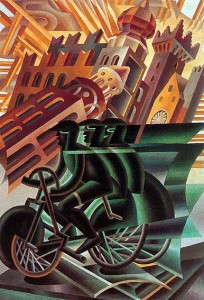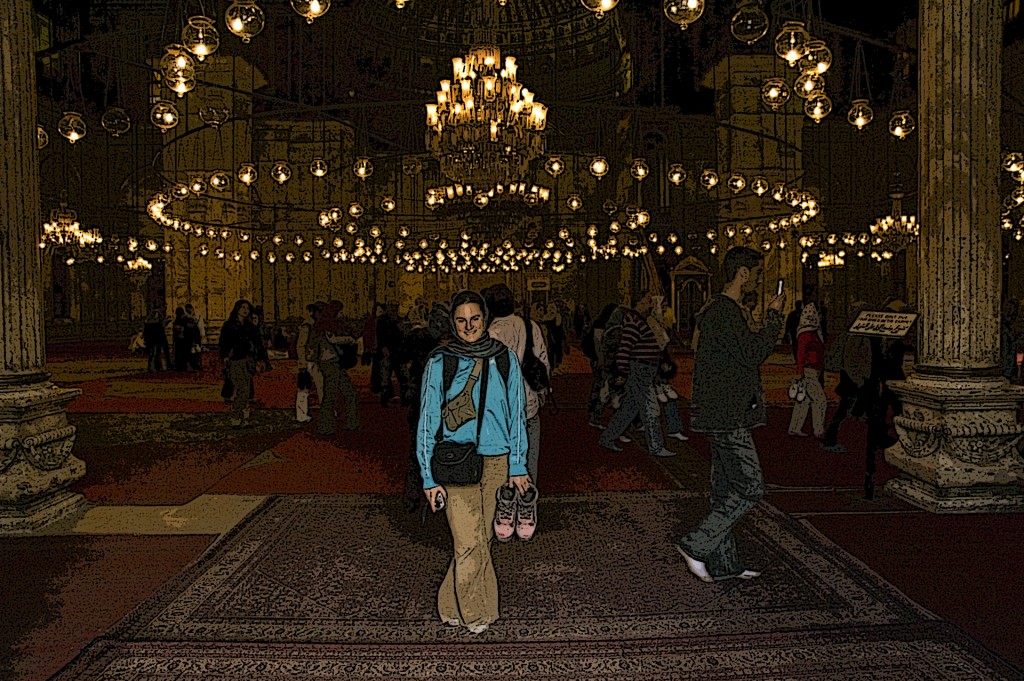 Futurism‘s all the rage these days in fashion, film, art, architecture, design, and opera. But the fixation on futurism is just getting started.
Futurism‘s all the rage these days in fashion, film, art, architecture, design, and opera. But the fixation on futurism is just getting started.
This February, a new multidisciplinary exhibit on futurism is opening at the Guggenheim. “Italian Futurism, 1909-1944: Reconstructing the Universe” will be the largest Futurist retrospective ever held outside of Italy. With more attention being paid to the “Futurist Manifesto”–written by F.T. Marinetti and published in Le Figaro in 1909–it’s important to remember where the manifesto itself begins.
We have been up all night, my friends and I, beneath mosque lamps whose brass cupolas are bright as our souls, because like them they were illuminated by the internal glow of electric hearts. And trampling underfoot our native sloth on opulent Persian carpets, we have been discussing right up to the limits of logic and scrawling the paper with demented writing.
— Futurist Manifesto
 The mosque lamps and Persian carpets make sense if you know where Marinetti’s life began. Marinetti was born in Alexandria, Egypt in 1876, after his family was invited to Egypt in 1865 by Khedive Isma’il Pasha. In fact, in his manifesto, Marinetti compares the ecstasy of his car falling into a ditch of “nourishing slime” and “muddy waters” to his memory of nursing on the “blessed black breast” of his Sudanese wet nurse in Egypt. In addition to exploiting the image of a woman from Egypt’s southern neighbor (Sudan), Marinetti also had a preoccupation with Egypt’s western neighbor (Libya). As the author of a manifesto which celebrates violence and war (“the World’s Only Hygiene”), Marinetti was a proud proponent of the Libyan (Italo-Turkish) War of 1911-1912.
The mosque lamps and Persian carpets make sense if you know where Marinetti’s life began. Marinetti was born in Alexandria, Egypt in 1876, after his family was invited to Egypt in 1865 by Khedive Isma’il Pasha. In fact, in his manifesto, Marinetti compares the ecstasy of his car falling into a ditch of “nourishing slime” and “muddy waters” to his memory of nursing on the “blessed black breast” of his Sudanese wet nurse in Egypt. In addition to exploiting the image of a woman from Egypt’s southern neighbor (Sudan), Marinetti also had a preoccupation with Egypt’s western neighbor (Libya). As the author of a manifesto which celebrates violence and war (“the World’s Only Hygiene”), Marinetti was a proud proponent of the Libyan (Italo-Turkish) War of 1911-1912.
When, in my Battle of Tripoli, I compared a trench bristling with bayonets to an orchestra, a machine gun to a femme fatale, I intuitively introduced a large part of the universe into a short episode of African battle.
— Marinetti, Technical Manifesto of Futurist Literature
Despite futurism’s recent resurgence in the arts (at a time when charges of fascism and neo-fascism in the political arena are being thrown from all directions), no journalists or media commentators have gestured to the (post)colonial conflicts which accompanied the rise of the early 20th century futurist sensibility, or drawn any connections between recent interventions in the Middle East with the wars that the Futurists themselves endorsed. Perhaps futurism’s back in style not only because of its appealing aesthetic, but also because of its embrace of “militarism,” “patriotism,” “scorn for women,” and “the destructive gesture of freedom-bringers” in a wireless world ravaged by new technologies of violence and war…
We will glorify war—the world’s only hygiene—militarism, patriotism, the destructive gesture of freedom-bringers, beautiful ideas worth dying for, and scorn for woman.
— The Futurist Manifesto
